A journey through the lush olive groves of Andalucía, exploring the traditional processes of olive harvesting and oil production around Marbella.
Article by Sophie Gatward-Wicks
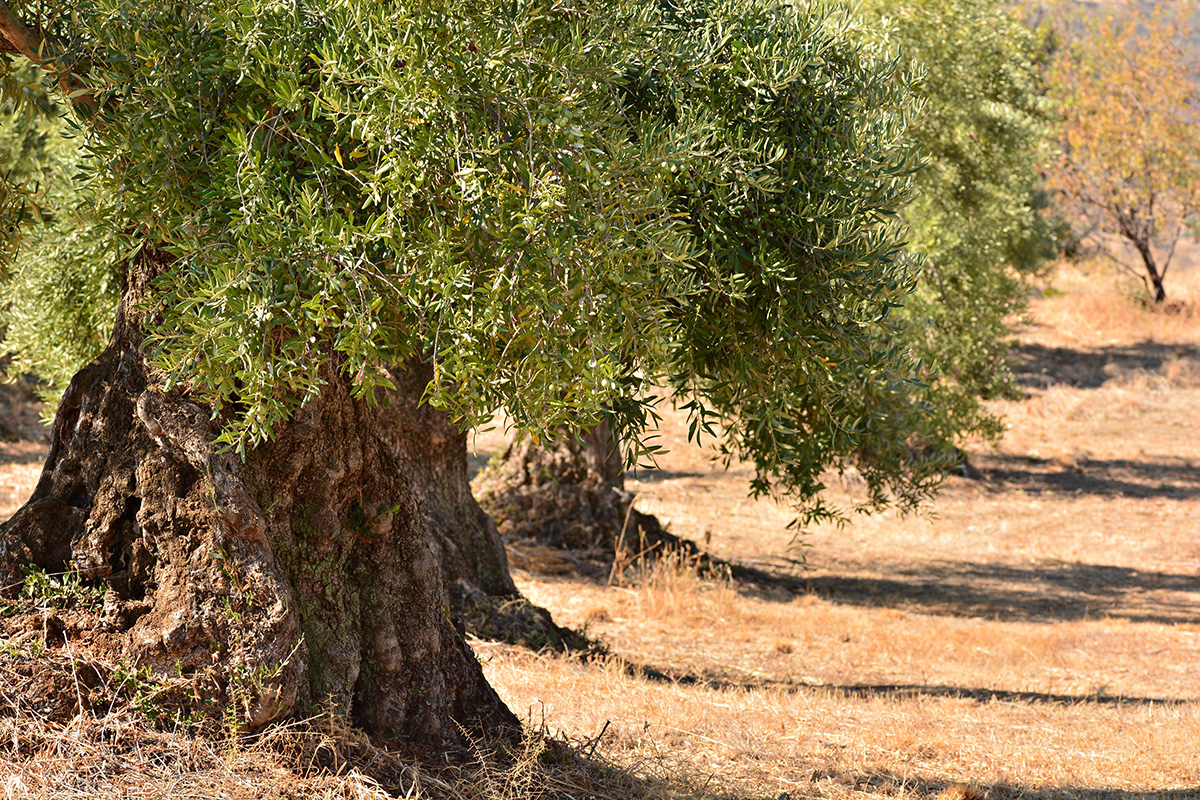
Andalucía boasts a rich agricultural heritage, with its olive groves standing as a testament to centuries-old traditions. Olive trees, living hundreds of years with their gnarled trunks and silver-green leaves, serve as biological monuments which form part of the fundamental pillars of prosperity in the region. Particularly during the harvesting months of October to early December, Spaniards find great pride and purpose in the yield produced by these generationally cherished trees. The region’s olive groves have been an integral part of Andalusian culture and its economic identity for millennia, thanks to the warm climate, fertile soil and the farmers’ passion for the olive and devotion to perfecting its cultivation.
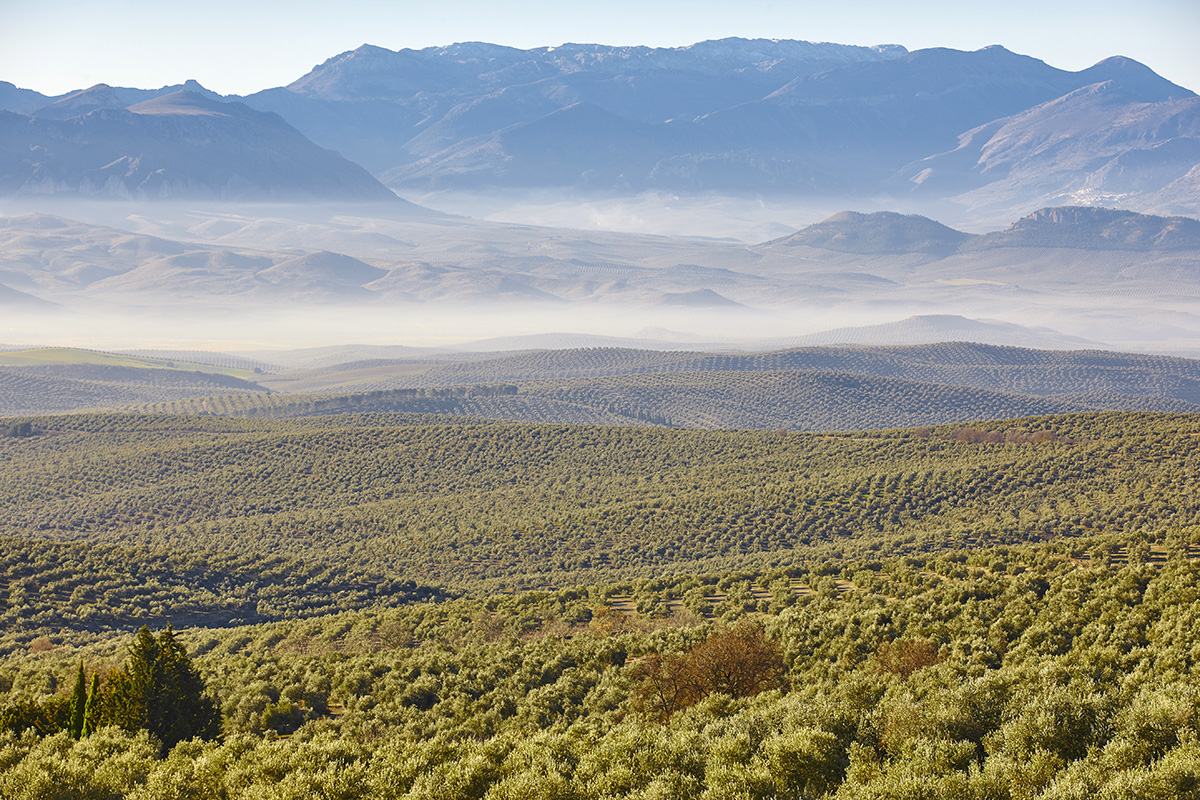
Andalucía is the largest olive tree grower in the world, boasting a sprawling expanse of over 1.5 million hectares which produce an impressive annual output of 900,000 tonnes of olive oil and 380,000 tonnes of table olives. This constitutes an average of 80% of Spain’s total olive production. The growing of olive trees within Andalucía has had such a dramatic impact on the towns and communities, that the region even implemented its very own Olive Grove Law. (Law 5/2011 of 6 October), as well as a master plan (The 2015 Olive Grove Master Plan) that recognises the olive grove as the most representative and symbolic farming ecosystem in Andalucía. (1)
Jaén, Córdoba, Sevilla, Málaga and Granada are the provinces considered to be at the forefront of the olive harvest, with Jaén holding the internationally renowned title of ‘World Capital of Olive Oil,’ an accolade which is not unsurprising considering that 4,500 square kilometres of land in Jaén is occupied by 40 million olive trees. The region’s rolling hills adorned with rows of orchards stretching as far as the eye can see becomes not just a geographical marvel, but also a significant cultural influence which ripples throughout Southern Spain.
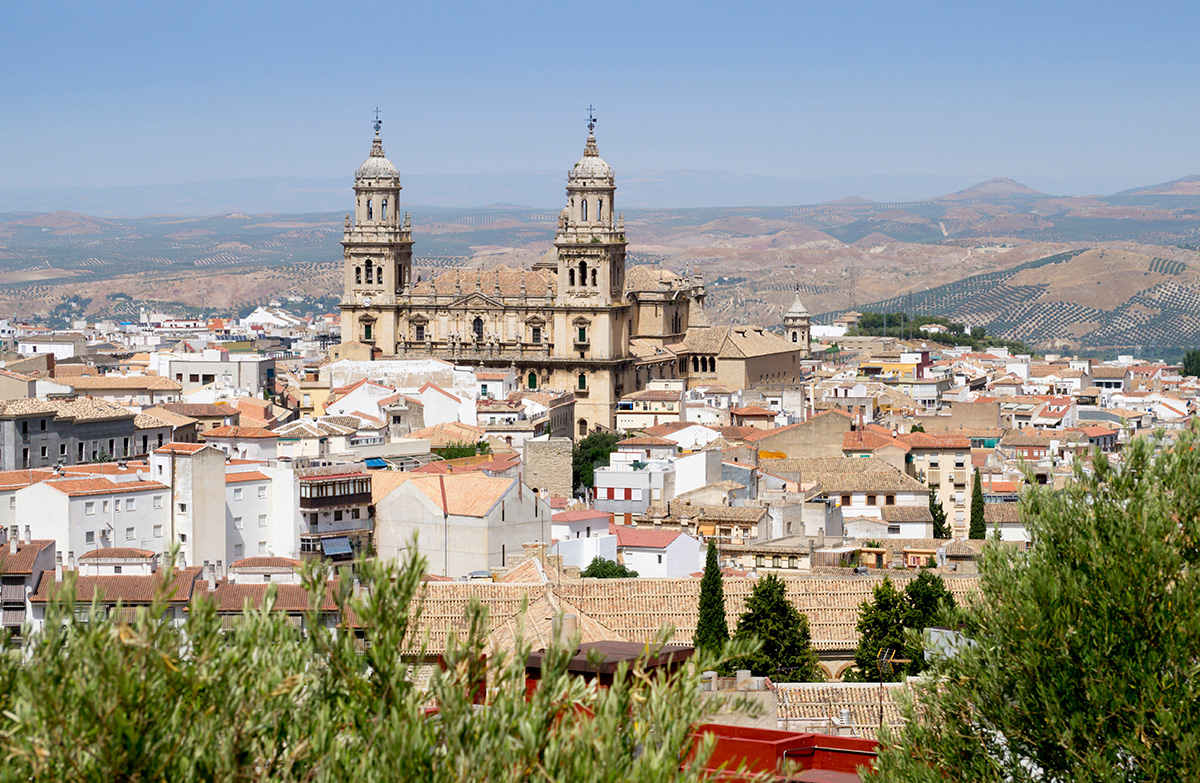
The Harvest
For Andalucía, the Autumnal time of year is a vibrant and crucial period for the dedicated families, farmers and workers involved in the business of olive harvesting and olive oil production. Even those who do not directly work within the industry, are still part of the hubbub, with olive oil tourism in abundance. Communities throughout Andalucía take great pride in the thriving tradition, which can be observed in the daily conversations of the locals as the groves come alive with activity at the first veraison harvest (the stage at which the olives change colour from green to purple).
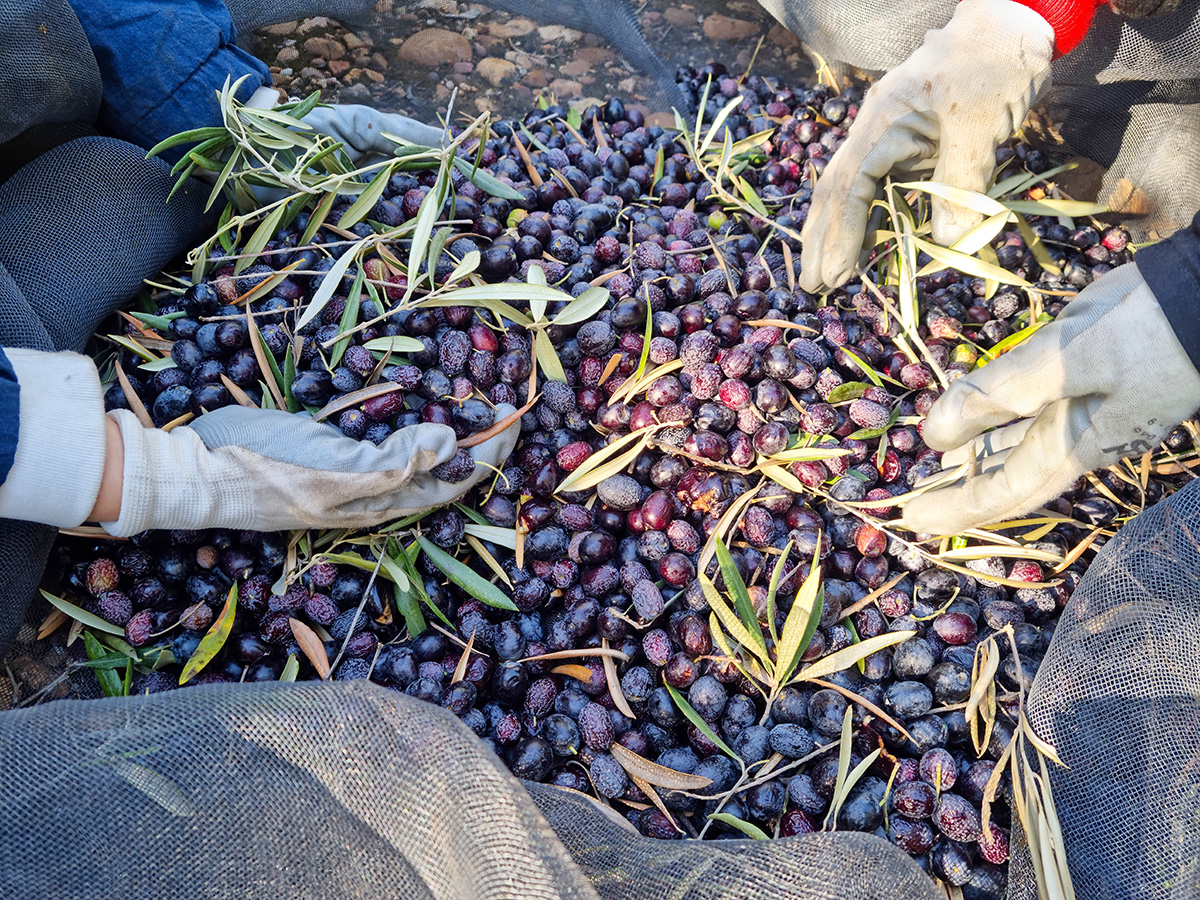
Once harvested, either via traditional methods involving hand-picking, or by mechanical shakers and combs, the olives embark on a journey to the mill. During olive oil production they will undergo a meticulous process of cleaning, milling and extracting the precious olive paste that will later yield the liquid gold. The olive paste is subjected to hydraulic presses, separating the oil from the water and solids. This initial pressing results in extra virgin olive oil, revered for its purity and intense flavour profile. After pressing, the oil undergoes filtration to remove any remaining impurities, ensuring a clear and pristine final product. It is then carefully bottled, ready to embark on its journey to kitchens around the world.
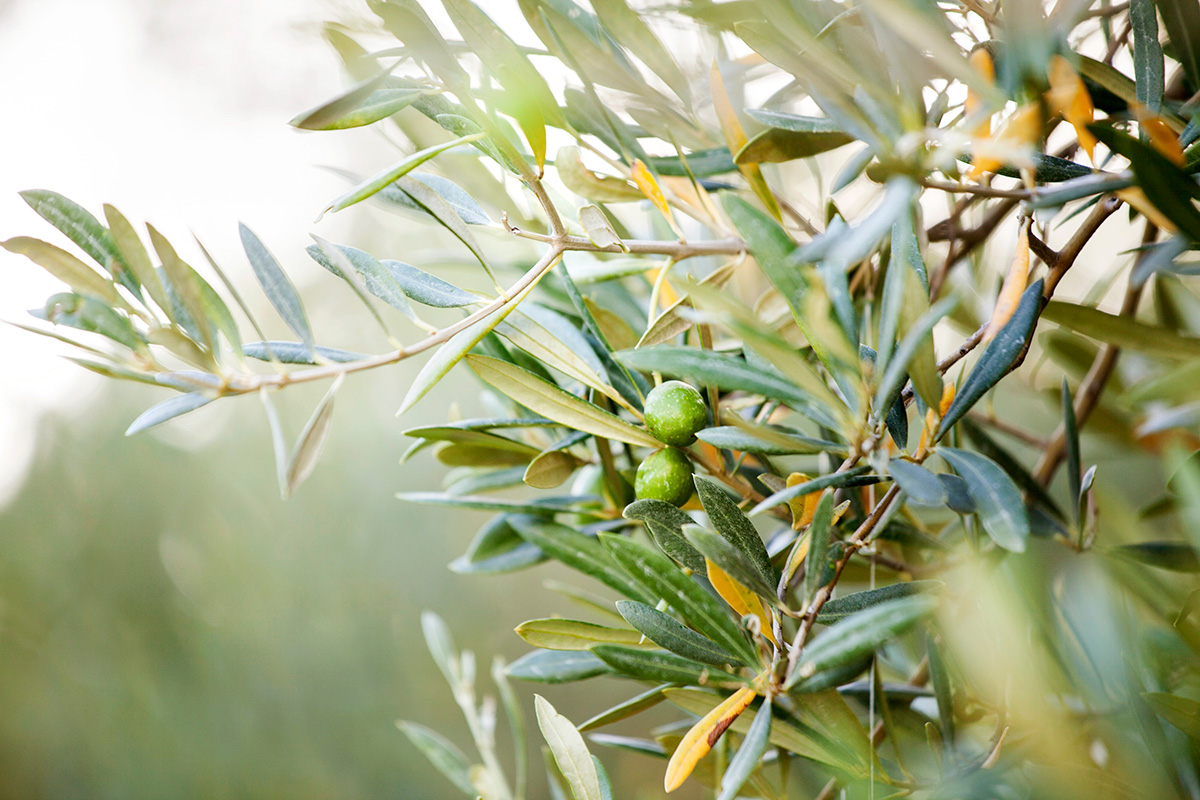
Beyond Marbella: Gateway to Olive Paradise
It’s fair to say that if you have not experienced an olive grove in Andalucía, then you have not experienced the true roots of the region. Visitor-friendly farms and fincas can be found up and down the country, with some great estates less than 1.5 hours from Marbella.
Finca La Torre
Bobadilla – (1hr 20 mins from Marbella)
Set against the backdrop of the Sierra de las Nieves Natural Park, Finca La Torre gives space to 380 hectares of land which has been divided between 230 hectares of olive groves and 150 hectares of pastures. The renowned olive farm provides visitors with an immersive experience from grove to press, offering a deep understanding of the olive oil-making process with guided tours, a masterful culinary experience and an opportunity for high-quality retail therapy.
However, the tourism extends far beyond the grove, as just a few kilometers away lies Antequera with its World Heritage Dolmens, famous for their remarkable architectural works of European prehistory and one of the most important examples of European Megalithism. Antequera also contains some of the most incredible natural sites such as the Fuente de Piedra Natural Reserve with its phenomenal lagoon, and Torcal de Antequera Natural Park where ancient rock formations tower overhead like ginormous fairy sand castles. Finca La Torre and the surrounding natural landscape is a truly outstanding part of Spain which is well-worth the journey.
Camino Finca La Torre
29540 Bobadilla, Málaga
Email: info@fincalatorre.com
Tel: (+34) 952 111 619
https://www.fincalatorre.com/es/
Aceites Molisur
Coín – (40 mins from Marbella)
Nestled in the foothills of the Alhaurín el Grande mountain range, visitors to Aceites Molisur can expect a breathtaking view alongside a deep dive into the way in which extra virgin olive oil is extracted and produced. Here you can also sponsor an olive tree, an initiative that allows you to become a virtual farmer for a whole year.
With the virtual farming experience, you will receive updates on all the actions and care carried out by the farm staff on your olive tree from the moment when fertilisers are used, to the journey of plowing the land and the maintenance of pruning right through to the olive harvesting itself. On the farm they say that the longer you sponsor a tree, the greater the emotional bond you receive.
Coín-Churriana Highway A-404, km5
Alhaurín el Grande
Email: info@aceitesmolisur.com
Tel: (+34) 952 59 49 39
https://aceitesmolisur.es/
LA Organic
Ronda – (1 hr 8 mins from Marbella)
LA Organic is not just a stunning olive grove up the famous Ronda road, but also a popular wedding venue with views of the Sierra de Grazalema. ‘The Greenhouse’ (named accordingly), has been tastefully converted into an events room, which has the capacity to host any type of occasion, from soiree to formal corporate meeting.
One of the activities you can enjoy at LA Organic involves processing your very own olive oil, participating in the harvesting of the olives, and grinding them at the mill where you will then be packaging and personalising your own label. Visitors can also pick vegetables and fruits from the organic garden/orchard which the resident chef will happily cook and serve to you and your guests.
In addition, there are also holistic activities for the body and mind, to help you really appreciate the relaxed atmosphere of this natural paradise, such as yoga outside, meditation, bird watching and a high class picnic amongst the trees whether it be breakfast, lunch or tea.
Highway A-367 Km. 39 29400 Ronda, Málaga
Tel: +34 650 88 72 47
https://www.laorganic.es/oleoturismo/ronda/
Molino del Hortelano
Casabermeja – (56 mins from Marbella)
This wonderfully serene, quaint and intimate estate is fully focused on the purity and health benefits contained within their olive oil. The mill provides visitors with hands-on experience in learning about the production process of extra virgin olive oils in the modern mill, as well as receiving a tour of the old stone mill from the 18th century (previously a wine press).
As part of the package experience you can submerge the senses in the traditional way that extra virgin olive oil should be appreciated: at breakfast. ‘El Tostón’ as they call it, consists of toasted bread over hot coals, with plenty of extra virgin olive oil that is made in-house. For those who don’t fancy a breakfast, oil tasting is also available as part of the guided tour. The differing flavours are distinct and each one is used for specific culinary purposes. You can of course buy each of the different types of olives oils available at the mill:
Verdial
Soft but full of nuances, flavour and aroma. Perfect for pastries and desserts, as well as for fruit salads and to combine with cheeses.
Aloreña Manzanilla
Strong aroma and flavour, which pairs perfectly with seafood, and is also great for salads.
Hojiblanca Temprano
An Extra Virgin Olive Oil that is complex and balanced at the same time.
Hojiblanca
This olive is classically used among high-end Extra Virgin Olive Oils that invites us to savour the olive grove at the table.
Picudo
The complexity of flavours and aromas reign supreme in this extra organic olive oil.
Camino Real, S/N, Casabermeja, 29160, Málaga
Email: contacto@molinodelhortelano.com
Tel: +34 628 27 32 76
https://molinodelhortelano.com/
Whether you’re a culinary enthusiast, a lover of nature, or a seeker of cultural treasures, a visit to any one of Andalusia’s olive groves promises an experience that transcends the ordinary. It’s a journey through time, a celebration of terroir, and a toast to the indomitable spirit of a region that continues to enrich the world with its liquid gold.







































































